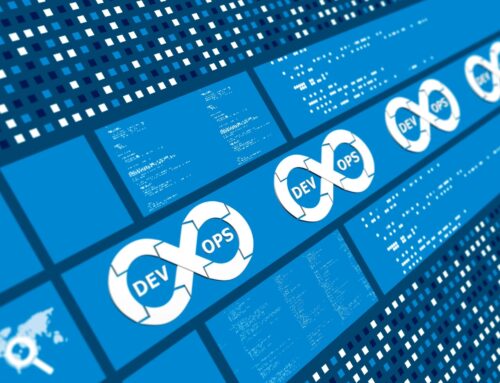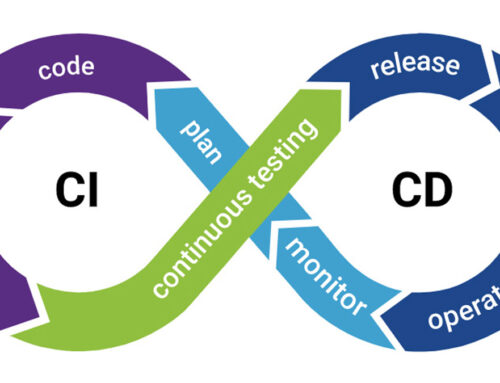DevOps, an abbreviation for Development and Operations, is a methodology employed in the software development and IT industry that aims to create a collaborative and integrated approach to software development, testing, deployment, and operations.
As a cultural shift, DevOps transforms the traditional software development process by emphasizing automation, continuous delivery, and continuous monitoring. It represents not just a set of practices or tools, but a way of working focused on delivering high-quality software products and services that adapt to customers’ ever-changing needs.
Traditionally, developers and operations teams worked in silos. Developers wrote code and passed it to the operations team for deployment and maintenance, which could be time-consuming, error-prone, and inefficient. This often led to delays, bugs, and security vulnerabilities. In contrast, DevOps aims to integrate both teams and automate the entire software development process, from code development to deployment and maintenance. This results in faster, more reliable software products with minimal errors.
Automation is a key principle of DevOps. By automating tasks such as building, testing, and deployment, DevOps enables developers and operations teams to work together more effectively and efficiently. Continuous integration (CI) and continuous deployment (CD) are crucial components of DevOps automation.
CI involves developers frequently merging code changes into a central repository, where automated builds and tests ensure the code is functional and error-free. CD takes this process further by automatically deploying the changes to the production environment without manual intervention.
Continuous monitoring is another vital aspect of DevOps. By monitoring software application performance in real-time, DevOps teams can quickly identify and address any arising issues. This enables them to track and analyze application performance, detect bottlenecks, and troubleshoot and fix problems swiftly.
DevOps complements agile software development, with many of its practices and principles, such as automation and continuous delivery, inspired by agile methodologies. Agile and DevOps work together to ensure that software development is a collaborative and iterative process, with continuous refinement of requirements and incorporation of feedback into the development process.
Adopting DevOps can provide several benefits to an organization, including faster delivery of high-quality software products, reduced time-to-market, and improved customer satisfaction. DevOps encourages collaboration between different teams, leading to better communication and goal alignment. By automating repetitive tasks and streamlining processes, DevOps can also increase efficiency and cost savings.
The Beginnings of DevOps
The concept of DevOps has gained popularity since its inception in 2009, with the first-ever DevOps Days conference held in Ghent, Belgium. Since then, many organizations have adopted DevOps, and it has become an essential part of the software development and IT industry.
One of the defining characteristics of DevOps is the emphasis on shared ownership, workflow automation, and rapid feedback. This means that all members of the software development and IT operations teams work together, share responsibility for the project’s success, and have a clear understanding of the project’s goals and requirements. By automating routine tasks and streamlining the development process, teams can move faster and respond more quickly to changes in the project or market.
About ArchOps
ArchOps is an extension of DevOps that proposes a new approach to software development and deployment by using software architecture artifacts as the starting point for operations deployment instead of source code. It emphasizes architectural models as first-class entities in software development, deployment, and operations.
Continuous Integration and Continuous Delivery (CI/CD)
Continuous Integration and Continuous Delivery (CI/CD) is a critical component of DevOps, involving the continuous building, testing, and deploying of software. In a CI/CD pipeline, software changes are automatically built, tested, and then deployed to production, with the aim of catching issues early in the development process and fixing them before they escalate.
Collaboration and communication are also essential for successful DevOps implementation. DevOps emphasizes a culture of shared ownership, where developers and operations teams collaborate to build and deploy software. This collaborative approach helps teams achieve faster time-to-market with reduced risks. By working together, developers and operations teams can identify and address issues more quickly, leading to faster feedback and improved product quality.
DevOps also highlights the importance of monitoring and feedback. Teams need to continuously monitor the performance of their software and systems to identify issues and opportunities for improvement. They should also collect feedback from customers to understand their needs and enhance the user experience.
Moreover, DevOps emphasizes a culture of continuous improvement. Teams need to be constantly learning and adapting, focusing on enhancing processes, tools, and technologies. DevOps is not a one-time implementation; it is an ongoing process of improvement and optimization.
In conclusion, DevOps is a transformative methodology in the software development and IT industry that fosters collaboration, integration, and automation to streamline the entire software development process. By incorporating practices like CI/CD, continuous monitoring, and ArchOps, organizations can improve their software quality, reduce time-to-market, and enhance overall customer satisfaction. Embracing a culture of continuous improvement and collaboration between different teams is crucial for a successful DevOps implementation.












